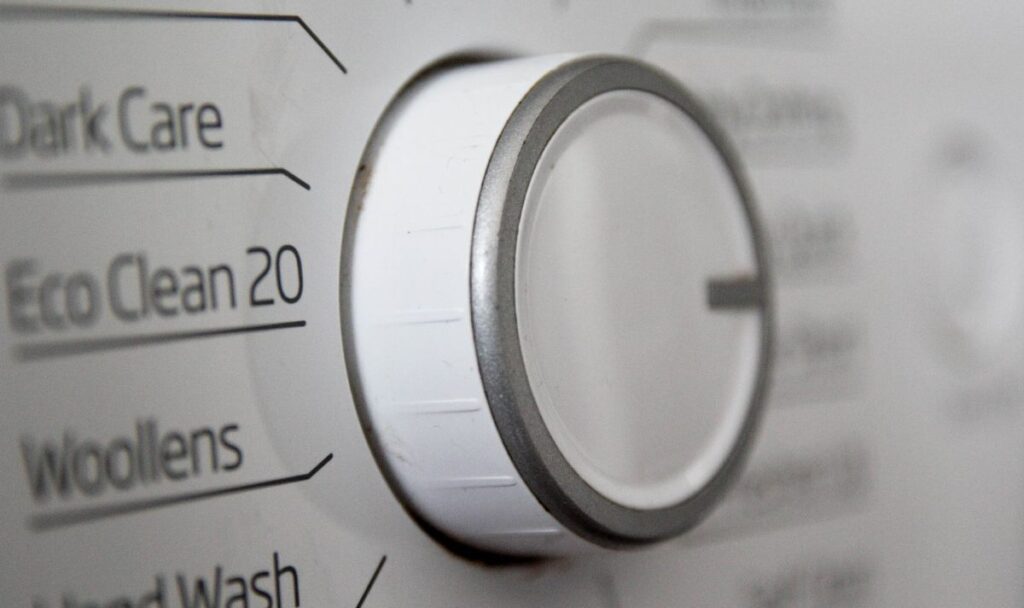While pillows don’t need to be cleaned as regularly as other items of bedding, they still need to be washed around every six months. Whether this is done in a washing machine or by hand, it is important to know how to clean them so they don’t become flat and ruined. Martin Seeley, CEO and sleep expert at MattressNexDay, told Express.co.uk: “As the average person spends a third of their life in bed, your pillow naturally becomes home to bacteria, dead skin cells and dust – all of which can cause acne flare-ups and more.
“You should, therefore, wash your pillows every three months in the washing machine, however, make sure to check their wash label to see what wash suits them best.”
Before deciding on how to wash them, check the label to see if they can be placed in the machine. If they can be washed, it’ll also state the ideal temperature.
The expert said: “When washing them, make sure to use a mild washing powder and include an extra spin cycle at the end to get rid of as much moisture to prevent the build-up of mould.
“Feather pillows can be washed the same as down pillows. However, they should receive a gentle cycle setting due to being made of natural materials. Do, however, check the care label for full instructions.”
READ MORE: Steps to sow tomato seeds successfully – key temperature
Plus, it will leave you secure in the knowledge that they’re not going to enjoy the experience. While vinegar helps repel dust mites, it also breaks down the proteins in their droppings, which are responsible for the allergens that many sleepers react to.
“Distilled white vinegar is best and the solution should be sprayed, rather than poured, over the whole pillow.
“You may have seen online hacks on how to clean your bed with bicarbonate soda. Although it’s found its place on the internet, this tip has been used for decades to freshen up mattresses that may smell a little past their sell-by date.
“The trick is to sprinkle yours with bicarbonate of soda and leave it for a few hours. Bicarbonate soda is incredibly absorbent and will soak up sweat residue and associated odours. After a few hours, vacuum your mattress clean.”
READ MORE: Steps to ‘breathe life back’ into flat carpets this spring
When it comes to drying pillows, they may need to be left out to dry naturally, which may take a couple of days so make sure you have spare ones to use in the meantime.
Some materials however, can be placed in the tumble dryer if you have one, making sure to keep the temperature as low as possible.
He added: “You should, however, add a tennis ball to a sock and place this in the dryer too – as it can beat out any lumps.”
When it came to washing bedding, experts at www.pizualinens.com told Express.co.uk that all bedding, including pillowcases should be washed on a 60C cycle to ensure bacteria is killed.
They noted: “This temperature is ideal for killing dust mites and allergens.”
Dust mites can infest all kinds of pillows including feather, down and memory foam, making no type immune to them.
As well as cleaning pillows, make sure to change bedding around once every week to once every two weeks to help keep numbers down.
Lucy Ackroyd, Head of Design at Christy, said: “Wash and change your bedding at least once a week.
“If you have pets sleeping on your bed or you’re an allergy sufferer, particularly in hay fever season, I’d recommend upping it to twice a week.
“It’s important not to neglect your inner bedding either so aim to wash your duvet and pillows at least twice a year as even with linen covering them, the inner fillings can absorb dead skin cells and body oils and odours.”

